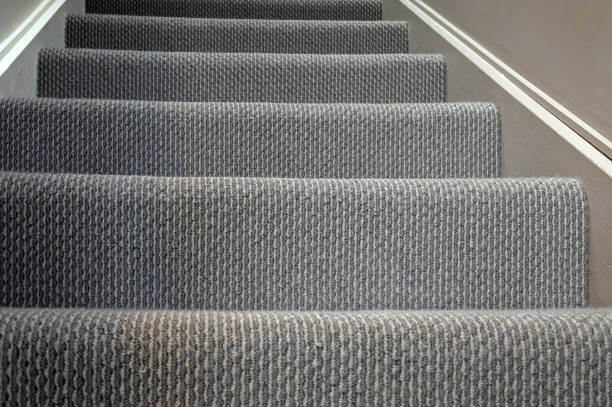staircase carpetcan be made of a variety of materials, from natural fibers like wool and sisal to synthetics like nylon, polyester, and olefin, to suit a variety of home settings. A synthetic nylon carpet may be your best option for stairs because of its strength, stain resistance, and safety. There are two common kinds of nylon compositions: nylon, which is easier to recycle, and nylon which has a little bit more resilience. However, both of these are good choices. Alternatively, you might want to think about using a combination carpet for the stairs. These typically contain 80% wool and 20% synthetic materials to provide the best of both worlds: warmth and tenacity.
Choose a color for the carpet that covers stains and dirt.
Although you may adore ivory and cream, your stairs will not. Your light carpeting will soon appear shabby if there is a lot of foot traffic. Taupe and coffee, two deeper neutrals, can be used to strike a balance. Heathered shades, which are subtle combinations of complementary colors, are available from some manufacturers. These shades are better at hiding dirt than monochrome carpets.
To be more stable underfoot and resistant to traffic, the best carpet for stairs has a low pile—less than 3/4 of an inch.
A synthetic plush style with a twisted or cut pile is always safe, but looped styles like Berber should be avoided occasionally (especially if you have pets whose claws could catch in the loops). Select a high-quality brand and ensure proper installation to make the latter function. Berber should be installed lengthwise, not side to side, in rows from top to bottom.
Instead of using a thick, spongy carpet pad, use a thin, firm one.
The thinner cushion, which is frequently made of foam, rubber, wool, felt, and synthetic fiber, will hold up better and provide a more stable surface, although that it won’t feel as bouncy. The Carpet and Rug Institute advises backing the low-profile carpet used on stairs with one that is no thicker than 3/8 inch and has a density of 8 pounds. Pick a high-grade cushion, which will expand the life expectancy of your covering. For any additional recommendations, inquire with the carpet manufacturer.
More will be about the thickness of the heap.
The combination of fiber thickness and how tightly the strands are woven is taken into account when determining the height of the carpet pile and the density of the carpet. Face weight is the amount of fiber per square yard, expressed as ounces. Assuming that the carpet height does not change, a carpet with a higher face weight typically indicates superior quality. Go for the gold with basically a 35 to 40-oz. face weight and a lower pile height. The carpet pile’s compactness is indicated by the number of tufted rows per inch.
According to the Rug and Carpet Institute, these ratings range from three to 5,000 and are related to the number of tufted rows per inch. The higher the rating, the better for areas that see a lot of wear. While you’re at it, keep track of the tuft twist, or the number of twists in a single inch of carpet. Exceptionally curved fiber holds its shape longer, so intend to pick one with a tuft bit of five or higher.


Comments are closed.